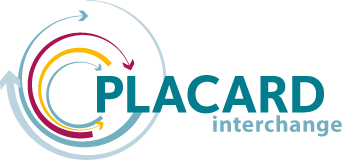PLACARD’s main goal is to establish a coordination and knowledge exchange platform for the climate change adaptation (CCA) and disaster risk reduction (DRR) communities. We encourage both physical and virtual multi-stakeholder dialogues that address the knowledge gaps and institutional fragmentation as they are currently described across CCA and DRR research, policymaking and practice.
We present an annual CCA and DRR Coordination Agenda, the project’s strategy for the coming year, based on the previous year’s discussions and interactions with different actors and findings. This allows us to identify a set of objectives in order to implement the Agenda.
The Coordination Agenda for our third-year activities will focus on six working streams:
- Narratives for preparedness and prevention
- Climate services
- Terminology and information knowledge management
- Nature-based solutions
- Foresight
- Monitoring & evaluation.
The process of strategically defining how the project should operate allows us to more accurately define the target audience, continue to support key processes and initiatives that already work towards the harmonisation of these two areas, and ensure that PLACARD is involved in key discussions and events. The review of our first two years’ work emphasised that the project should now work towards streamlining and facilitating communication, rather than creating an understanding of issues between CCA and DRR – these have become more obvious and have been adequately explored over time.
We have identified a set of key CCA and DRR processes as relevant to PLACARD:
- The Paris Agreement
- United Nations Framework Convention on Climate Change
- Intergovernmental Panel on Climate Change
- EU Strategy on adaptation to climate change
- Sendai Framework for Disaster Risk Reduction 2015–2030
- EU Action Plan on the Sendai Framework for Disaster Risk Reduction 2015–2030
- European Forum for Disaster Risk Reduction
- Disaster Risk Management Knowledge Centre
- Sustainable Development Goals
- Horizon 2020
- LIFE Programme
As the project progresses and receives further input from stakeholders, the strategy to reach and influence such processes will evolve, uncovering new ways and collaborations to contribute to their implementation. During our second year, we focused on a series of work streams and topics to share experience, contribute to closing gaps and promote learning. These activities provided more direct opportunities to contribute to existing collaborations as well as establishing new links among many CCA and DRR stakeholders, and further increase the outreach and impact of the PLACARD project.
Year 3 activities
Our third-year activities take into account suggestions from our stakeholders about the role of PLACARD under the work streams identified. The recommendations were made during consultations and events or sessions we organised.
Narratives for preparedness and prevention
- Create awareness on the use of appropriate narratives to enhance collaboration between CCA and DRR communities
- Provide guidelines for the construction and use of such narratives
Climate services
- Support C3S operational programme in DRR
- Contribute to the scoping forum of ERA4CS
- Inform other relevant climate services initiatives (e.g. Climateurope project, SEI’s Climate Services initiative) on sharing good practices
- Disseminate the use of Climate Services for CCA and DRR to a larger audience
Terminology and information knowledge management
- Create awareness for the use of appropriate language that can enhance the collaboration between CCA and DRR
- Provide guidelines and a taxonomy for the use of such language
- Work toward implementing this language across various knowledge sharing platforms and websites using the Climate Tagger
- Visualise the ontology in the PLACARD dynamic interactive landscape
Nature based solutions
- Promote the use of Eco-DRR in particular as this has not been as developed as EbA
- Understand the narratives supporting the use of EbA and Eco-DRR and how they contribute for the integration of CCA and DRR
- Understand how and which foresight methods are used on the planning of EbA and Eco-DRR
Foresight
- Promote the use of more and broader (qualitative and quantitative) foresight methods by diverse experts and stakeholders to explore future vulnerabilities, risks, opportunities and solutions
- Facilitate the use of foresight methods and to support forward-looking decision-making by analysing and categorizing foresight methods regarding their application in CCA and DRR, their strengths and weaknesses and their applicability along the different stages of a combined CCA-DRR policy cycle
- Promote a joint CCA-DRR approach using forward-looking methods
Monitoring & evaluation
- Explore the progress that European cities have achieved in terms of the development and implementation of MRE activities of CCA and DRR
- Investigate if there are similarities between the city and national level MRE activities; the challenges that local and national governments and MRE practitioners face and potential lessons to be shared
- Examine if there are opportunities to better align CCA and DRR MRE activities
- Disseminate the collected information to wider community of MRE experts and policymakers

